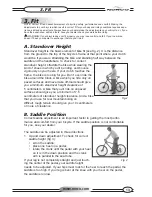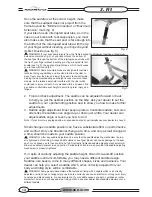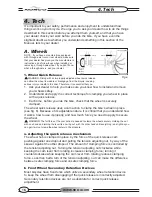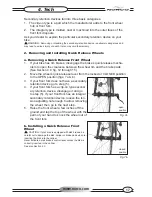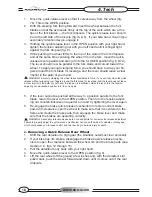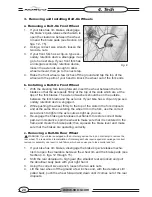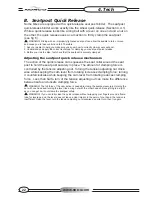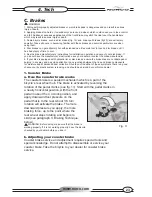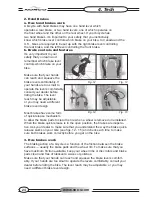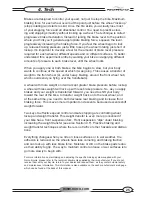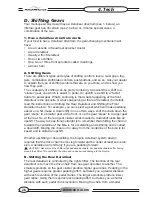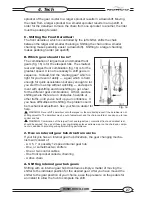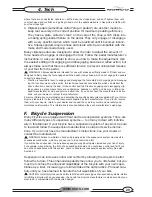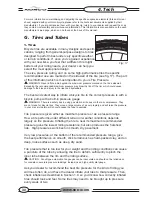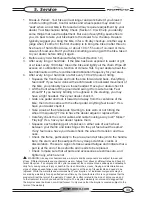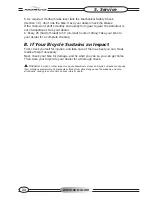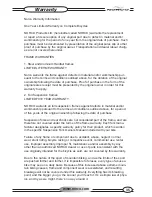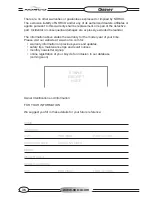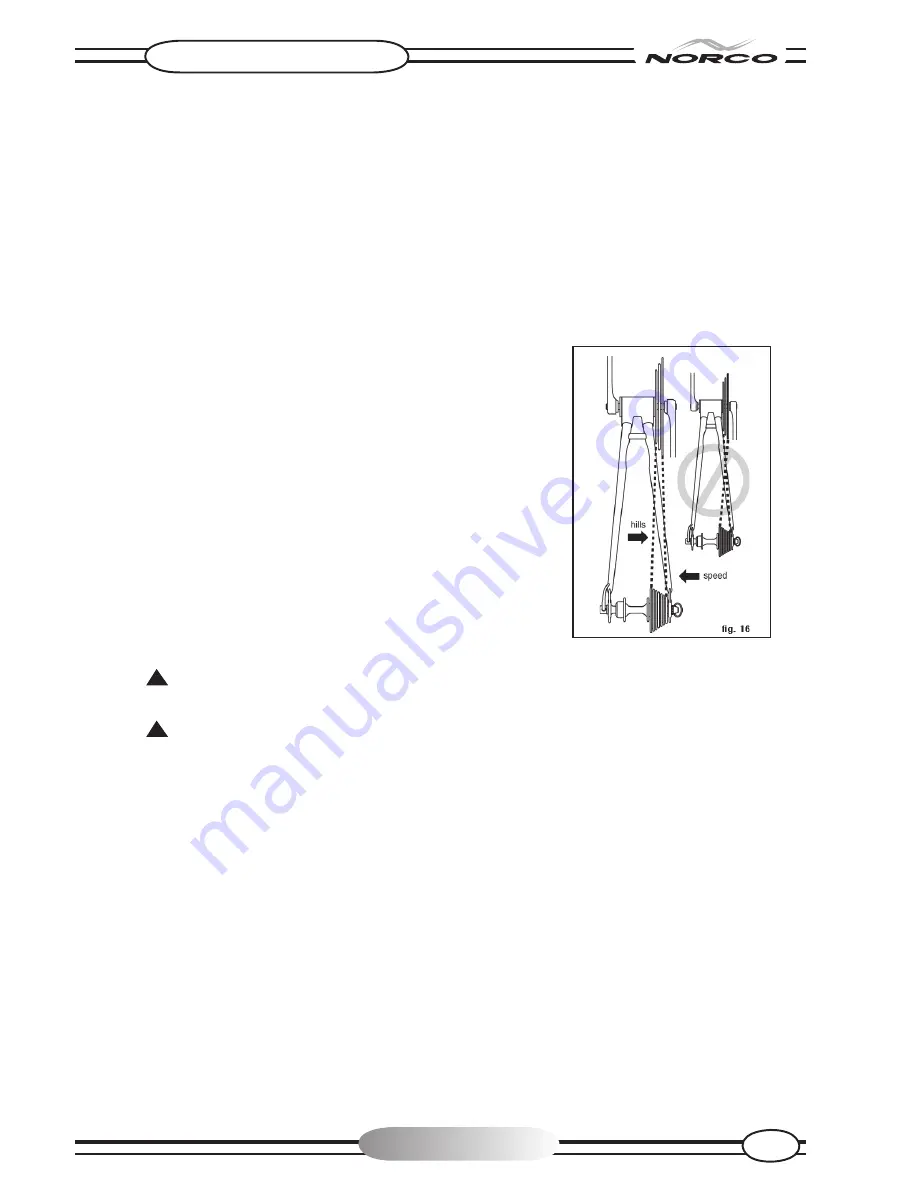
www.norco.com
27
sprocket of the gear cluster to a larger sprocket results in a downshift. Moving
the chain from a larger sprocket to a smaller sprocket results in an upshift. In
order for the derailleur to move the chain from one sprocket to another, the rider
must be pedaling forward.
C. Shifting the Front Derailleur:
The front derailleur, which is controlled by the left shifter, shifts the chain
between the larger and smaller chainrings. Shifting the chain onto a smaller
chainring makes pedaling easier (a downshift). Shifting to a larger chainring
makes pedaling harder (an upshift).
D. Which gear should I be in?
The combination of largest rear and smallest front
gears (fig. 16) is for the steepest hills. The smallest
rear and largest front combination (fig. 16) is for the
greatest speed. It is not necessary to shift gears in
sequence. Instead, find the “starting gear” which is
right for your level of ability — a gear which is hard
enough for quick acceleration but easy enough to let
you start from a stop without wobbling — and experi-
ment with upshifting and downshifting to get a feel
for the different gear combinations. At first, practice
shifting where there are no obstacles, hazards or
other traffic, until you’ve built up your confidence. If
you have difficulties with shifting, the problem could
be mechanical adjustment. See your Norco dealer for
help.
WARNING: Never shift a derailleur onto the largest or the smallest sprocket if the derailleur is not
shifting smoothly. The derailleur may be out of adjustment and the chain could jam, causing you to lose
control and fall.
WARNING: Combination of the largest front and largest rear, or smallest front and smallest rear
should be avoided. The use of these gear combinations places extreme wear on the chain and compo-
nents in addition to providing sub-optimal shifting performance.
2. How an internal gear hub drivetrain works
If your bicycle has an internal gear hub drivetrain, the gear changing mecha-
nism will consist of:
- A 3, 5, 7 or possibly 12 speed internal gear hub
- One, or sometimes two shifters
- One or two control cables
- One front sprocket called a chainring
- A drive chain
A. Shifting internal gear hub gears
Shifting with an internal gear hub drivetrain is simply a matter of moving the
shifter to the indicated position for the desired gear. After you have moved the
shifter to the gear position of your choice, ease the pressure on the pedals for
an instant to allow the hub to complete the shift.
Fig. 16
4. Tech
Summary of Contents for multi-speed bicycles
Page 1: ...for multi speed bicycles 7th Edition www norco com ...
Page 2: ......

